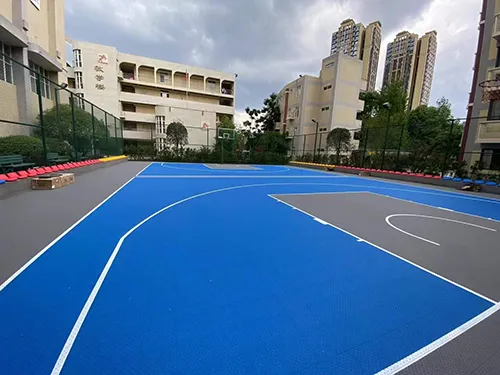Desemba . 12, 2024 10:41 Back to list
outdoor basketball court surface options
Outdoor Basketball Court Surface Options Choosing the Right One for Your Game
When it comes to outdoor basketball courts, the choice of surface material can have a profound impact on gameplay, player safety, and court longevity. With a variety of options available, understanding the benefits and drawbacks of each surface type can help players, coaches, and facility managers make informed decisions. This article explores common outdoor basketball court surface options and their unique characteristics.
1. Asphalt
Asphalt is one of the most popular surface materials for outdoor basketball courts. It provides a smooth and relatively durable surface, allowing for good ball bounce and traction. One of the advantages of asphalt is its cost-effectiveness; it is cheaper to install compared to other materials. Maintenance is fairly simple, usually requiring periodic sealing and crack filling to ensure longevity.
However, asphalt can become slippery when wet, which may pose risks during rainy weather. Moreover, in areas with extreme temperature changes, asphalt can expand and contract, leading to cracks if not properly maintained. In summary, asphalt is a solid choice for those looking for a budget-friendly option, but proper care and proactive maintenance are essential.
2. Concrete
Concrete surfaces are another commonly used option for outdoor basketball courts. With a robust and sturdy feel, concrete can withstand various weather conditions and heavy foot traffic. Players appreciate the consistent bounce of the ball on a concrete surface, and it is less prone to develop ridges or bumps over time compared to asphalt.
The primary downside to concrete is its initial cost—it is generally more expensive to install. Additionally, concrete can be unforgiving on players' joints, as it lacks the cushioning of some other materials. To counteract this effect, many courts incorporate special coatings or textured finishes to enhance grip and resilience. Overall, concrete is a strong contender for those who prioritize durability and performance.
3. Rubber
Rubber surfaces are gaining popularity for outdoor basketball courts due to their shock-absorbent properties. Unlike harder surfaces like asphalt and concrete, rubber can greatly reduce impact on players’ joints, providing a safer playing environment. Furthermore, rubber courts often have excellent traction, making them less slippery even when wet.
outdoor basketball court surface options

However, rubber surfaces can be more expensive to install and may require regular maintenance to avoid wear and tear from UV exposure. They can also be susceptible to punctures and tears from sharp objects. Nonetheless, for players who prioritize comfort and safety, rubber courts are an appealing option.
4. Acrylic Coatings
Acrylic court systems involve applying an acrylic layer over a sub-surface, usually asphalt or concrete. These coatings offer numerous customization options in terms of color and design. They also provide excellent traction and consistent ball bounce. One of the main advantages of acrylic surfaces is their ability to withstand UV rays and resist fading, ensuring that courts remain vibrant over time.
On the flip side, acrylic coatings can be more expensive than traditional surfaces and may require periodic resurfacing to maintain optimal conditions. Players should also be aware that acrylic surfaces can become slick when wet, which calls for caution during rainy conditions.
5. Multi-Sport Composite Surfaces
For facilities looking to cater to various sports, multi-sport composite surfaces offer versatility. These surfaces combine multiple materials—like rubber and acrylic—to create a playing field suitable for basketball, tennis, and other sports. They provide excellent shock absorption, making them easy on the joints while offering decent traction.
While composite surfaces can be more expensive than single-material options, they maximize utility for shared spaces. This option is particularly beneficial for schools and community centers where multiple sports are played.
Conclusion
Selecting the right surface for an outdoor basketball court involves balancing factors such as budget, performance, player safety, and maintenance requirements. Whether opting for asphalt, concrete, rubber, acrylic coatings, or multi-sport surfaces, each material has its unique advantages and considerations. By understanding these options, players and facility managers can create optimal playing environments that enhance the game while ensuring safety and enjoyment for all.
-
Durable Plastic Pickleball Court Tiles Versatile Commercial Plastic Flooring Solutions
NewsJul.05,2025
-
Optimal Height for Indoor Pickleball Court Meet Official Standards & Enhance Play
NewsJul.05,2025
-
Premium Pickleball Basketball Sport Court Tiles – Durable, Versatile, Easy Installation
NewsJul.05,2025
-
Converting Tennis Court to Pickleball Fast & Affordable Solutions for Any Facility
NewsJul.04,2025
-
Professional Tennis Court Lining Services Pickleball Court Marking Experts
NewsJun.24,2025
-
Pickleball Court for Sale - Premium Flooring Solutions for Sports Venues
NewsJun.10,2025

